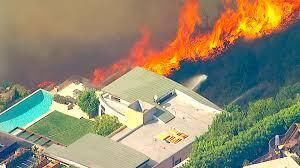
Until this past January, the Pacific Palisades neighborhood was home to approximately 23,000 residents, including 9000 homes and many commercial and retail establishments. The Palisades Fire started in the Santa Monica Mountains of Los Angeles County on January 7, 2025, and for three weeks spurred on by the Santa Ana winds, spread and burned a massive area of 23,707 acres. In its wake it destroyed 6,837 structures, and killed twelve residents.
A century ago, United States Census data reports that in 1925 there were only 300 residents and 100 homes in the Pacific Palisades. The area was basically open country with virtually no homesteads. At that time, however, the United States experienced three times as many fires and more than five times more land burned annually compared to the past ten years. (US Forest Service page 12)
Fires were a prominent part of the landscape a century ago, yet unless they happened in densely populated cities, they were not reported widely because they did not largely affect people and property.
So how much has growth contributed to our recent fire catastrophes?
“Chaos is the law of nature. Order is the dream of man”. These words are often attributed to the historian Henry Adams, reflecting the intractable relationship between nature and human aspirations for order. What it means now and going forward for the growth of humanity is an ever greater exposure to the perpetual chaos of nature in the form of floods, fires, earthquakes, hurricanes and pandemics.
As our population expands, we should expect more of these conflicts, not less. Climate change, a contributor to the chaos, will play a supporting role. The lead actor in the drama ahead will be our growth.

